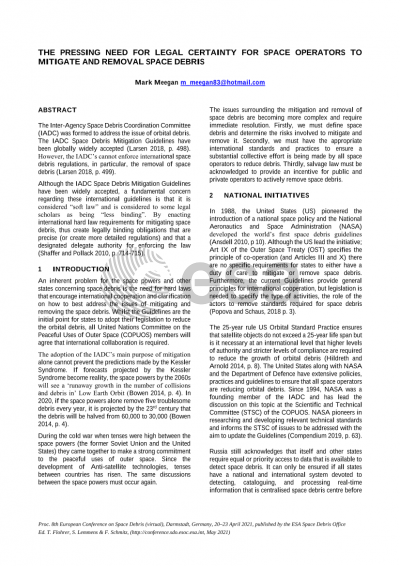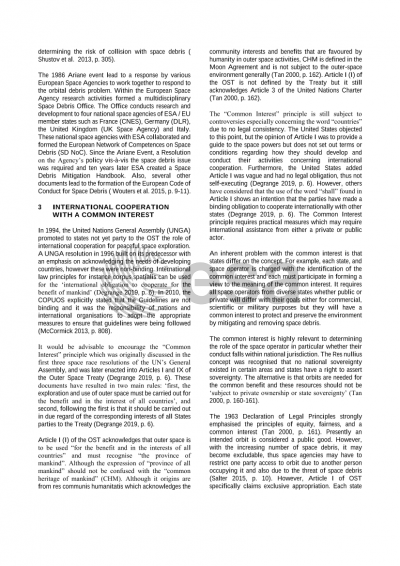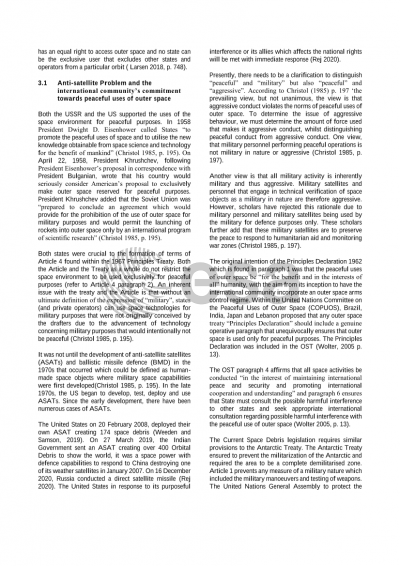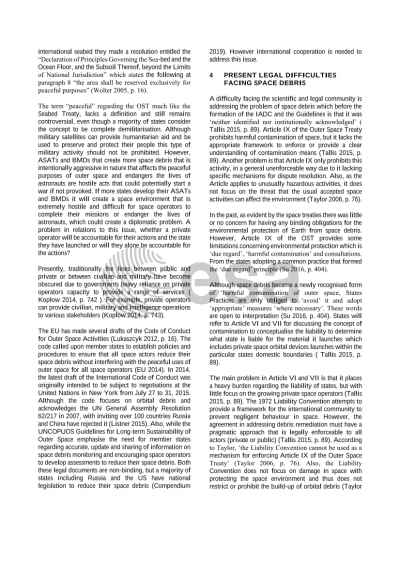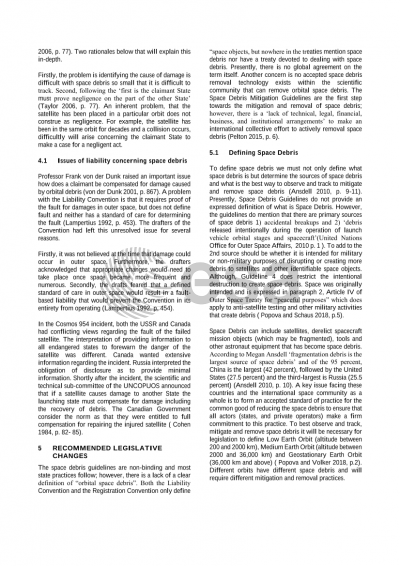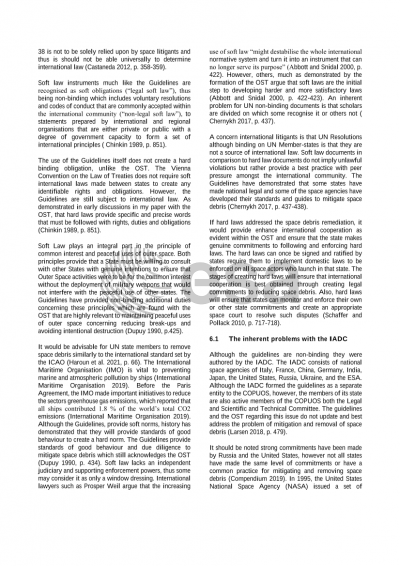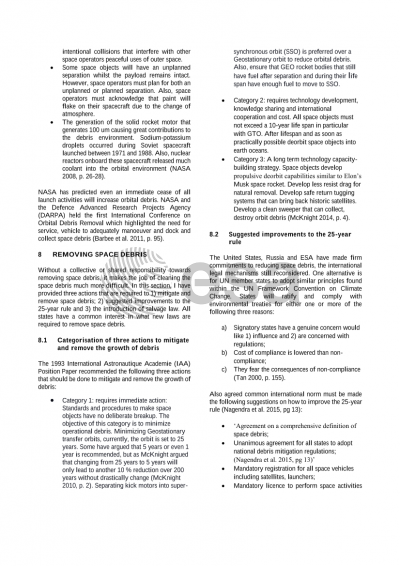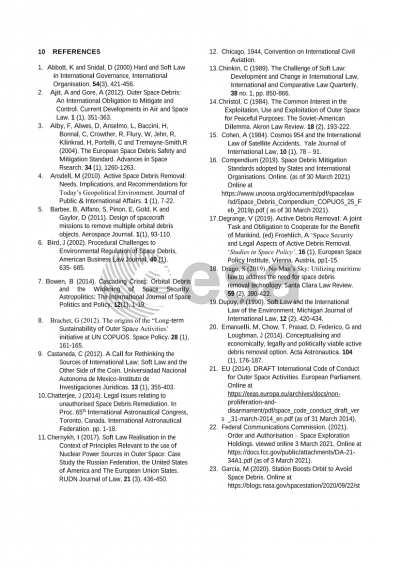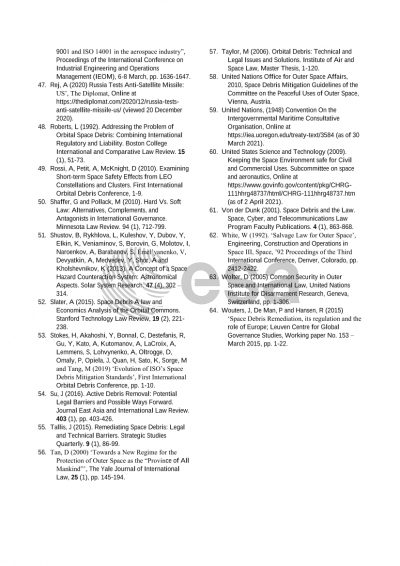Document details

Abstract
A common problem facing all space operators (whether private or public) is reducing the severity and number of space debris in Earth’s orbit. By 2029, Alfano et al. has estimated that by 2029 that the total of number satellites could range from 10,000 to 10,761 (Alfano et al. 2020 p.2). In 2012, there are more than 10 000 t in orbit. Also, 600 000 of these objects have a 1 cm cross-section. Only 5 percent of them are catalogued and tracked from Earth and only 6 percent of these objects are active spacecraft. The remaining 89 percent is space debris. On March 12, 2013, Roscosmos Head V.A Popovkin’s reported to the Russian Federation Council that the frequency of fatal spacecraft collisions with space debris is rapidly increasing with one collision per 18 months estimated to occur by 2013. Also, more than 95 percent of this space debris fragments remain undetected (Shustov et al. 2013 p. 302).
In 1978, the Cosmos 954 incident lead to the establishment of four governing norms which were:
1. A space operator becomes aware of a crash, they have a duty to provide notice to the state or private operator of the danger of collision;
2. The space operator has crashed in the territory of another state, they have the duty to provide that state with information for that injured state to assess the dangers and put into place the appropriate counter measures;
3. Specific rules require a duty to clean up the remains of a state’s or private operator’s satellite that has crashed in another state’s territory;
4. The space operator whose satellite has crashed has a duty to compensate the injured state as a result of the crash (Cohen 1984, p. 78).
The Cosmos 954 incident highlights the need for clear and precise international laws regarding the mitigation and removal of space debris concerning to agreed common scientific and technical approach.
The Inter-Agency Space Debris Coordination Committee (IADC) was formed to address this issue. The IADC Space Debris Mitigation Guidelines have been globally widely accepted (Larsen 2018, p. 498). However, the IADC’s cannot enforce international space debris regulations, in particular, the removal of space debris (Larsen 2018, p. 499).
Although the IADC Space Debris Mitigation Guidelines have been widely accepted, a fundamental concern regarding these international guidelines is that it is considered “soft law” and is considered to some legal scholars as being “less binding”. These guidelines can be considered to lead new international laws that can define legislation in three dimensions 1) precise rules 2) duties, rights, remedies, obligations and 3) delegation to third party decision-makers, thus creating space debris laws that are “harder” legal character ( Shaffer and Pollack 2010, p. 713, 714). By enacting international hard law requirements for mitigating space debris, thus create legally binding obligations that are precise (or create more detailed regulations) and that a designated delegate authority for interpreting and implementing the law (Shaffer and Pollack 2010, p. 714-715).
Preview
